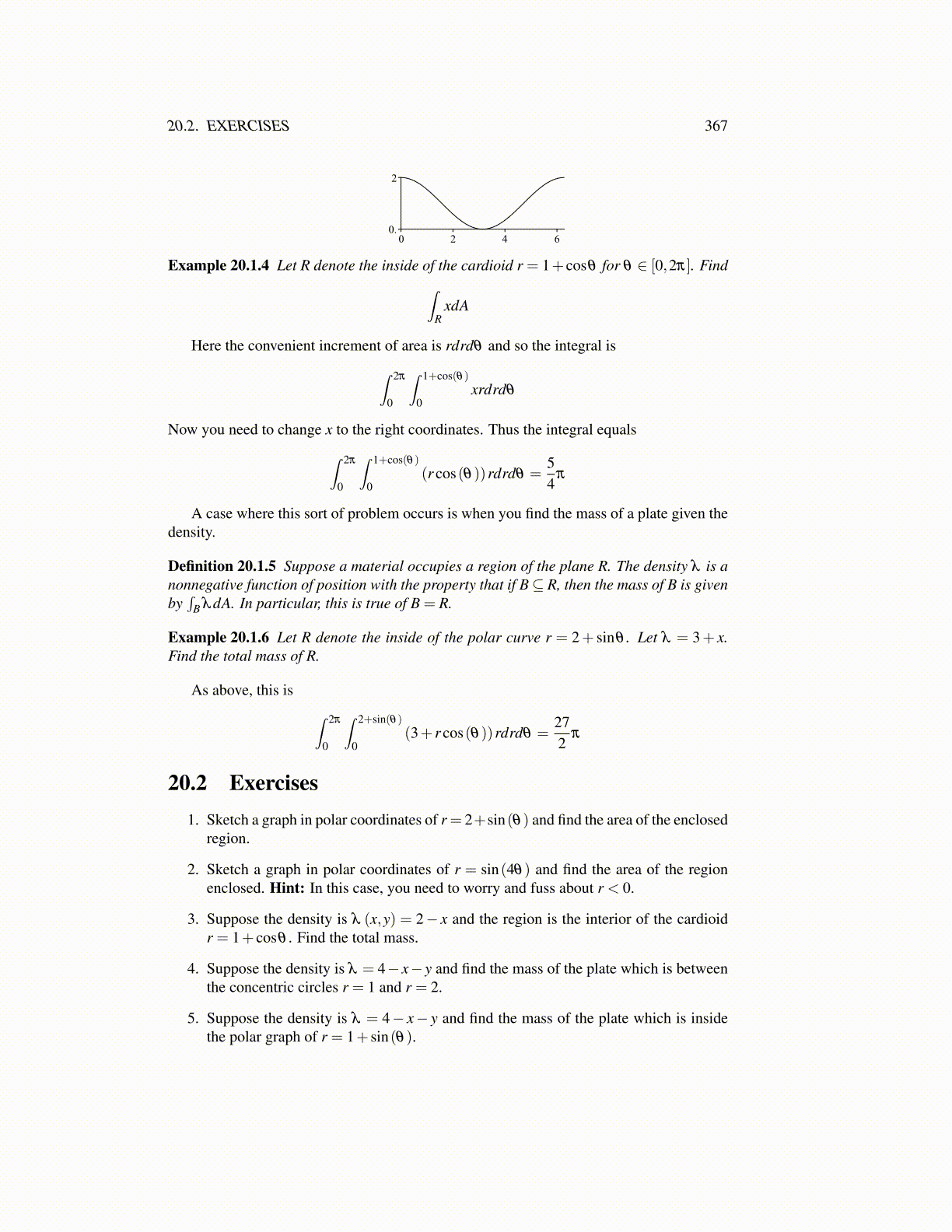
20.2. EXERCISES 367
Example 20.1.4 Let R denote the inside of the cardioid r = 1+ cosθ for θ ∈ [0,2π]. Find∫R
xdA
Here the convenient increment of area is rdrdθ and so the integral is∫ 2π
0
∫ 1+cos(θ)
0xrdrdθ
Now you need to change x to the right coordinates. Thus the integral equals∫ 2π
0
∫ 1+cos(θ)
0(r cos(θ))rdrdθ =
54
π
A case where this sort of problem occurs is when you find the mass of a plate given thedensity.
Definition 20.1.5 Suppose a material occupies a region of the plane R. The density λ is anonnegative function of position with the property that if B⊆ R, then the mass of B is givenby∫
B λdA. In particular, this is true of B = R.
Example 20.1.6 Let R denote the inside of the polar curve r = 2+ sinθ . Let λ = 3+ x.Find the total mass of R.
As above, this is ∫ 2π
0
∫ 2+sin(θ)
0(3+ r cos(θ))rdrdθ =
272
π
20.2 Exercises1. Sketch a graph in polar coordinates of r = 2+sin(θ) and find the area of the enclosed
region.
2. Sketch a graph in polar coordinates of r = sin(4θ) and find the area of the regionenclosed. Hint: In this case, you need to worry and fuss about r < 0.
3. Suppose the density is λ (x,y) = 2− x and the region is the interior of the cardioidr = 1+ cosθ . Find the total mass.
4. Suppose the density is λ = 4− x− y and find the mass of the plate which is betweenthe concentric circles r = 1 and r = 2.
5. Suppose the density is λ = 4− x− y and find the mass of the plate which is insidethe polar graph of r = 1+ sin(θ).